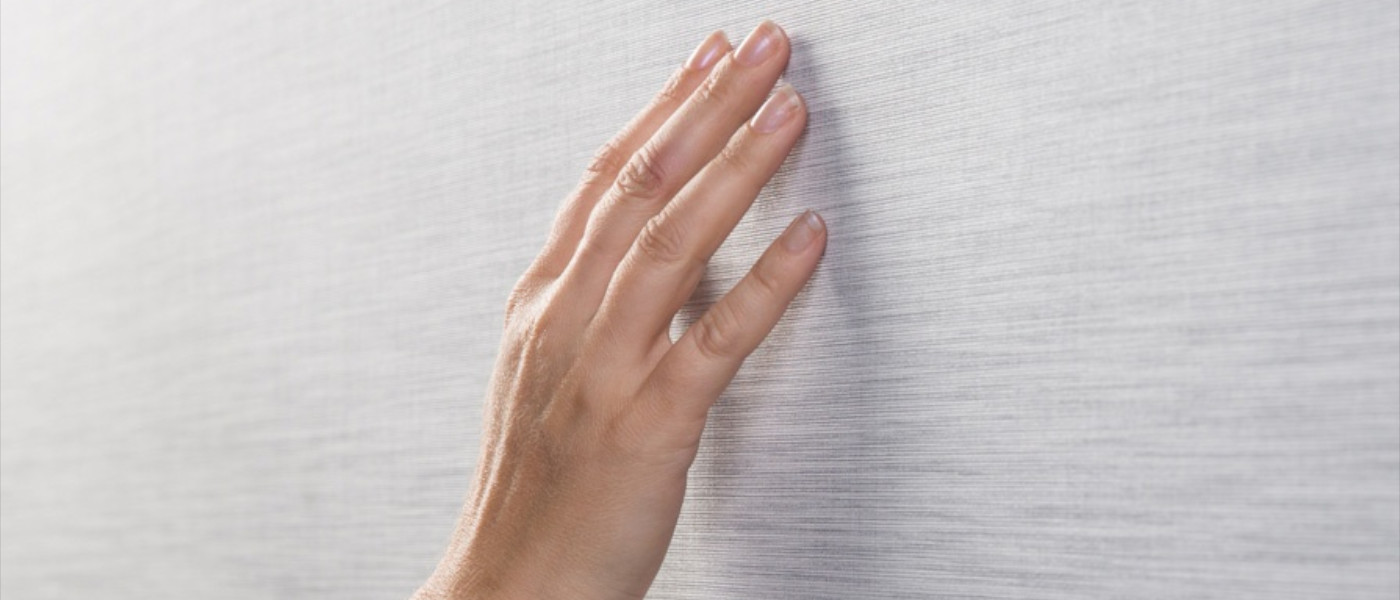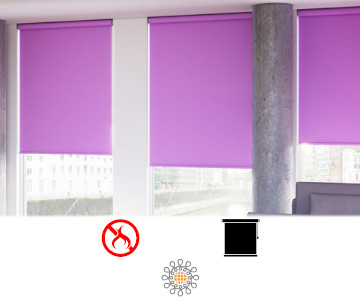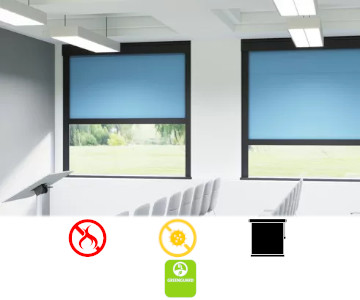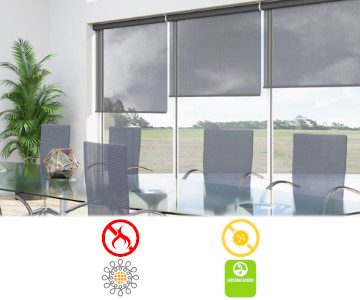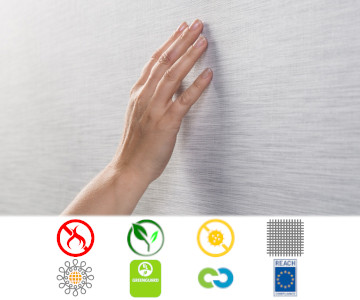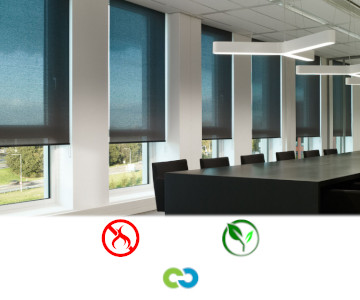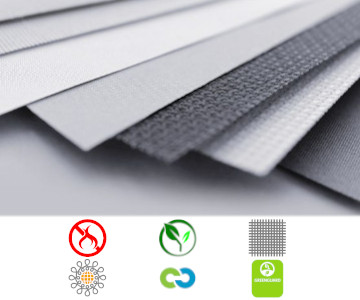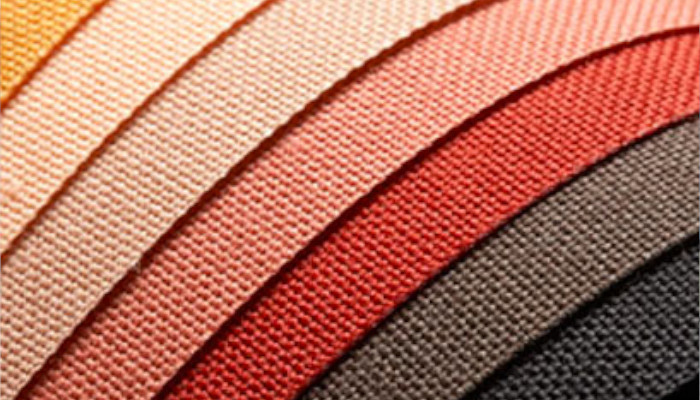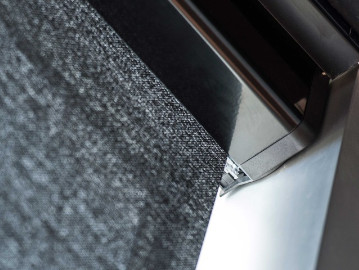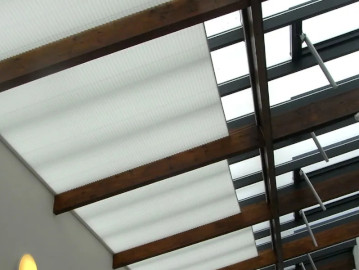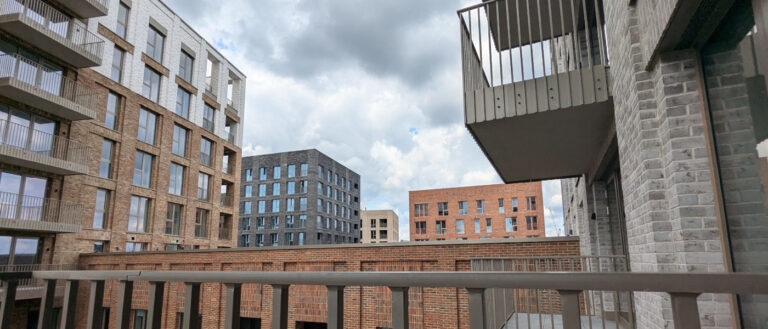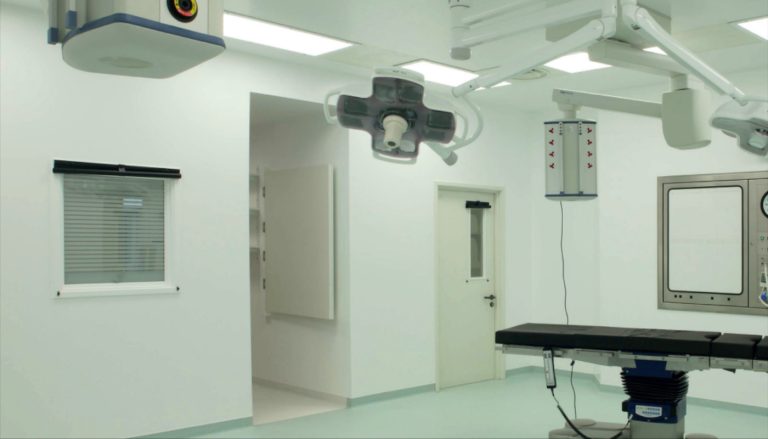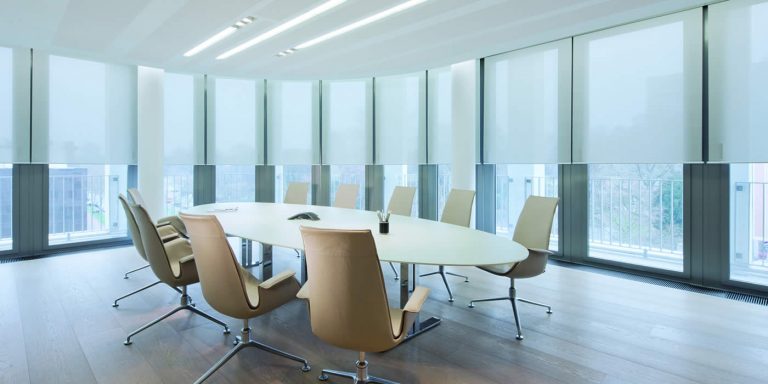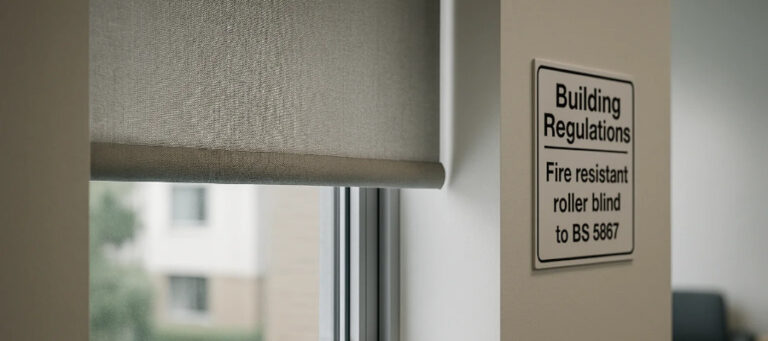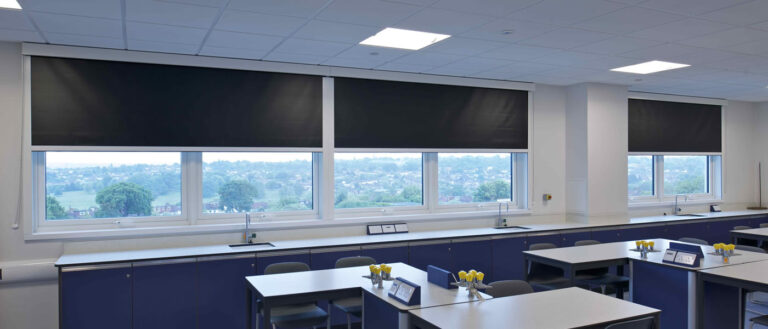How to Choose the Right Fabric for Your Solar Shading Project
Choosing the right blind fabric is more than a design decision—it’s a vital step in ensuring the comfort, efficiency and overall performance of a building.
Whether you’re specifying for a high-end residential project or a busy commercial environment, the fabric you select will directly impact thermal comfort, energy performance and aesthetics.
Let’s break it down.
The right blind fabric helps manage solar heat gain and provides effective shading, creating a comfortable environment for occupants.
By reducing heat in summer and insulating against the cold in winter, you’ll minimise energy use and control costs—essential for achieving performance targets in today’s buildings.
It’s not just about temperature.
Glare control ensures clear visibility for screens and workspaces, while aesthetic appeal lets you seamlessly blend the blinds with the overall architectural style.
This balance of function and form is what makes blind fabric selection so critical, especially for specifiers aiming to meet client expectations.
Why Blind Fabric Selection Matters
At Enviroscreen, we understand the importance of getting it right.
As a supplier and installer of bespoke, made-to-measure blinds, we tailor every solution to your project’s unique needs.
From commercial buildings requiring robust shading solutions to residential spaces needing softer finishes, our range of high-performance fabrics ensures you’re covered.
Make blind fabric a key part of your design strategy.
When selected thoughtfully, it’s a solution that doesn’t just fit the window—it fits the building’s needs, its occupants and your project goals.
Key Factors to Consider When Selecting Blind Fabrics
When specifying blind fabrics, it’s important to go beyond aesthetics and consider how they will impact comfort, functionality and performance.
Here’s what you need to know to make the right choice.
Performance in Terms of Solar Heat Gain and Glare
Blind fabrics are essential for managing solar gain and glare, both of which significantly affect occupant comfort.
By reducing the amount of heat entering a space, blinds can maintain a stable indoor temperature and lower reliance on air conditioning.
This improves thermal performance and helps meet energy efficiency goals.
Key features to look for:
- Weave: Tighter weaves block more sunlight, while looser weaves allow for better visibility.
- Transmittance: The percentage of light passing through the fabric affects how well it controls glare.
- Openness Factor: A low openness factor (e.g., 1-5%) reduces solar heat gain and glare, ideal for office and educational settings.
Choosing a fabric with the right combination of these factors ensures you strike a balance between light, visibility and heat control.
Fabric Characteristics for Light Control and Privacy
For spaces requiring precise light control and privacy, the transparency, colour and weave of the fabric play critical roles.
For instance:
- Dark-coloured fabrics absorb more light, which reduces glare but can retain heat.
- Light-coloured fabrics reflect sunlight, helping to manage solar heat gain while maintaining a bright interior.
- A closed fabric weave provides greater privacy, ideal for healthcare or meeting rooms.
When designing for privacy, balance is key.
Opt for materials that allow enough natural light while offering coverage where it’s needed.
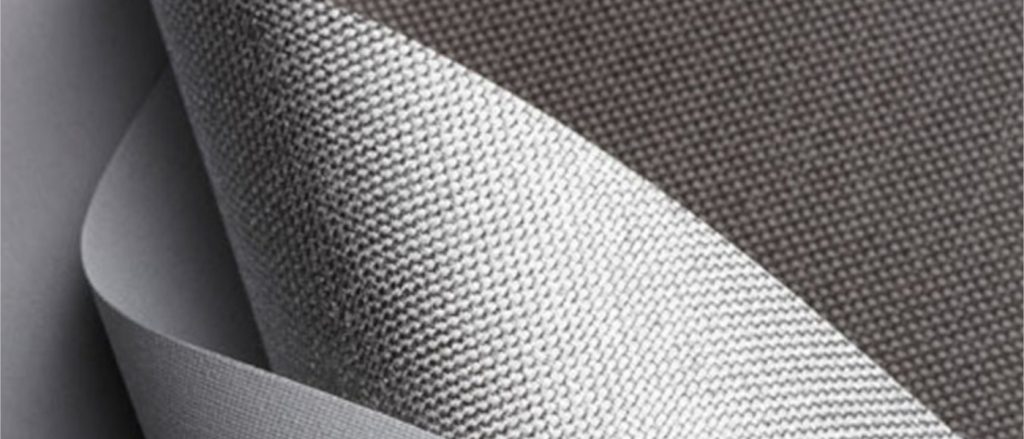
Aesthetics and Integration with Design
Blind fabrics don’t just perform—they also need to look the part.
The fabric colour, patterns and texture should complement the building’s overall design.
Whether you’re after a stunning array of classic neutrals for a timeless feel or bold patterns to make a statement, the right fabric can enhance the visual appeal of any space.
For seamless integration:
- Match the fabric colour with the room’s palette.
- Use textures and patterns to add depth or a bespoke touch.
- Consider fabrics that pair well with contemporary or traditional architectural styles.
We offer a wide range of options, ensuring your fabric choice meets both functional and design requirements.
When it comes to creating a visually appealing, high-performance space, the right fabric is a small detail that makes a big impact.
Types of Blind Fabrics: Features and Applications
Blind fabrics are designed with specific purposes in mind, offering unique benefits for different environments.
Let’s explore the key fabric types and their applications, so you can choose the right solution for your project.
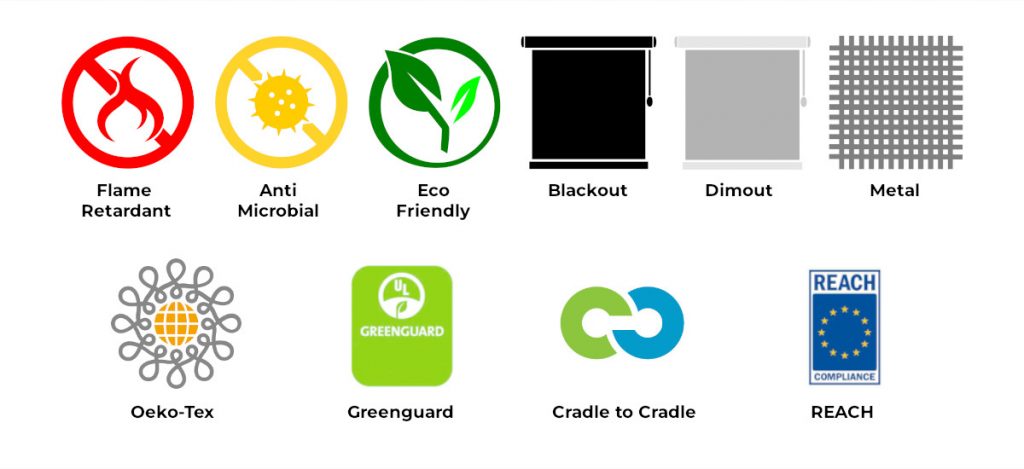
Blackout Fabrics for Privacy and Total Light Control
When privacy and complete light control are priorities, blackout fabrics are the go-to choice.
These fabrics block all external light, ensuring comfort and functionality in a range of settings.
Where They Work Best:
- Living Spaces: Perfect for bedrooms or home theatres, blackout blinds ensure a restful night or an immersive viewing experience.
- Healthcare: Ideal for patient rooms or procedure areas where light and privacy must be strictly controlled.
- Hospitality: Hotels rely on blackout shading to provide guests with uninterrupted sleep.
Benefits:
- Thermal Comfort: Blackout fabrics help regulate indoor temperatures by reducing heat transfer through windows.
- Visual Comfort: No more unwanted glare on screens or workspaces.
- Privacy: Completely opaque materials ensure maximum discretion.
Our blackout blinds are customised to fit your specific needs, offering a blend of function and style that suits any setting.
Solar Shade Fabrics for Energy Efficiency
Solar shade fabrics are engineered for spaces where controlling heat and glare is critical, without sacrificing natural light.
These fabrics are a favourite for projects aiming to optimise energy performance.
Key Features:
- Metallised Backing: Reflects sunlight, reducing solar gain and keeping interiors cooler.
- Screen Fabrics: Provide transparency for outward views while cutting glare—perfect for office environments or classrooms.
- Standard Options: Designed for general use, balancing light control and cost.
Benefits:
- Reduce Glare: Maintain a comfortable, productive environment.
- Energy Performance: Lower cooling costs by minimising heat ingress.
- Versatility: Suitable for both commercial and residential applications.
By choosing solar shade fabrics, you’re investing in solutions that deliver both efficiency and style.
Sustainable and New Fabric Technologies
Sustainability isn’t just a nice-to-have anymore—it has become essential.
Thanks to modern fabric technologies, blinds are now designed to be both eco-friendly and versatile, fitting all kinds of windows effortlessly.
Innovations in Fabric Design:
- Sustainable Fabrics: Materials crafted from recycled or renewable sources, reducing environmental impact.
- Engineered to Provide: Fabrics that combine durability, performance and aesthetics without compromise.
- New Fabric Technologies: Innovations that improve heat reflection, transparency and ease of maintenance.
Why Choose Sustainable Fabrics:
- Eco-Friendly Solutions: Align with building standards like BREEAM and LEED.
- Adaptability: Designed to fit windows of any shape or size, from small residential units to large commercial façades.
We are proud to offer sustainable fabric options that support your project’s environmental goals while delivering superior performance.
Selecting the right blind fabric for your project means understanding these types and their benefits.
From blackout to solar shading to sustainable options, there’s a solution for every need—and Enviroscreen is here to help you find it.
Choosing the Right Fabric for Specific Settings
Every building type comes with its own set of needs, and blind fabrics should meet both functional and aesthetic demands.
Here’s how to choose the right fabric for different environments.
Commercial Buildings: Maximising Performance
In commercial buildings, the right blinds do more than look good—they boost productivity and energy efficiency.
Whether it’s an office, retail space, or hotel, choosing high-performance blinds ensures a comfortable and functional environment.
Top Choices for Commercial Spaces:
- Roller Blinds: Sleek, durable and highly effective at managing light and heat.
- Vertical Blinds: Great for large windows, offering precise control over light and privacy.
- Shading Systems: Tailored solutions designed to improve thermal and visual comfort across entire façades.
Key Benefits:
- Energy Efficiency: Reducing solar heat gain keeps cooling costs down.
- Control Systems: Pair blinds with advanced systems for motorised or automated operation, making it easy to adapt to changing conditions.
- Professional Look: Blinds that complement modern designs elevate the space while meeting practical requirements.
At Enviroscreen, we specialise in made-to-measure solutions for commercial buildings, combining functionality with a polished finish.
Residential Spaces: Balancing Style and Functionality
In residential settings, blind fabrics need to strike the perfect balance between style and practicality.
From cosy living rooms to serene bedrooms, the right fabric enhances comfort and complements the home’s décor.
What to Consider:
- Window Treatments: Tailor fabric choices to the type of window—think blackout fabrics for bedrooms or translucent options for bright living spaces.
- Light Pollution and Privacy: Light-coloured fabrics reduce glare, while darker tones enhance privacy for urban homes.
- Room Styles: Match fabric textures and patterns to the overall aesthetic, whether it’s minimalist, rustic, or modern.
Why It Matters:
- Well-chosen window treatments create comfortable living spaces that feel cohesive and inviting.
- The right fabric choice helps manage natural light while ensuring privacy and energy efficiency.
We offer a range of bespoke options to ensure your residential blinds are both functional and stylish.
Healthcare and Educational Facilities
For healthcare and educational settings, functionality is non-negotiable.
Blind fabrics in these environments must deliver exceptional performance while meeting strict safety and efficiency standards.
Key Priorities:
- Thermal Performance and Glare Control: Minimising solar heat gain and glare creates a comfortable environment for patients, students and staff.
- Safety Standards: Fabrics designed to meet fire retardancy and durability requirements are essential in these high-traffic areas.
- Energy Efficiency Goals: Fabrics that optimise insulation and shading can significantly reduce operational costs.
Practical Applications:
- Fabrics are designed to support visual comfort in classrooms and healthcare rooms.
- Using materials that control light effectively ensures occupants are comfortable and productive.
Whether it’s a bustling office, a tranquil home, or a high-demand healthcare facility, the right blind fabric transforms a space.
With our expertise, you’ll find the ideal solution for any setting.

Expert Tips for Specifiers and Professionals
Specifying the right blind fabrics requires more than just selecting a material—it’s about making informed choices that optimise comfort, performance and longevity.
Here are some key tips to help you make the best decisions for your projects.
Optimising Thermal Comfort and Energy Performance
Blind fabrics play a critical role in improving thermal comfort and energy performance, directly influencing a building’s efficiency.
Choosing the right material can save energy, reduce costs and enhance occupant satisfaction.
Key Considerations:
- Visible Light Transmittance: Fabrics with balanced transmittance let in enough light for visibility while reducing glare and solar heat gain.
- High Performance Fabrics: Opt for materials specifically designed to manage solar gain and improve insulation.
- Energy Savings: Blinds that minimise heat transfer reduce the reliance on HVAC systems, making them an essential component in energy-efficient buildings.
By prioritising high-performance fabrics, you’ll not only meet energy goals but also provide a more comfortable environment for building occupants.
Best Practices for Long-Term Maintenance
Durability is essential for blinds in high-traffic or demanding environments.
Proper maintenance ensures blinds remain functional and visually appealing over time.
Maintenance Tips:
- Clean and Maintain Regularly: Use mild cleaning agents and non-abrasive cloths to keep fabrics looking new without damaging their properties.
- Choose Easy-to-Clean Materials: Fabrics treated for stain resistance or antimicrobial properties reduce the time and effort needed for upkeep.
- Durable Fabrics: Invest in high-quality materials that can withstand frequent use and cleaning without losing performance.
By selecting fabrics used for their durability and ease of care, you ensure the blinds will remain perfect for years to come.
Consulting Experts for Customised Solutions
Every project has unique requirements, and consulting with experts can save time, prevent mistakes and deliver tailored results.
How to Work with Manufacturers:
- Be Specific About Requirements: Clearly outline your needs, including thermal performance, light control and design preferences.
- Choosing the Right Fabric: Collaborate with manufacturers to evaluate materials that align with the project’s goals.
- Selecting the Right Solution: Ensure the blinds meet both functional and aesthetic demands, from energy efficiency to colour coordination.
At Enviroscreen, we specialise in guiding specifiers to the best solutions.
From the initial concept to the final installation, we ensure you’re equipped with blinds that match your project’s exact needs.
With these tips, specifying the right blind fabrics becomes a streamlined process.
By focusing on performance, maintenance and collaboration, you’ll achieve outstanding results that meet both your project’s requirements and your client’s expectations.
Case Studies: Real-World Applications of High-Performance Blind Fabrics
The true impact of high-performance blind fabrics is best seen in action.
These case studies highlight how our tailored solutions have transformed spaces, improving energy efficiency, comfort and aesthetics.
North Middlesex University Hospital
As part of an £80 million modernisation project, North Middlesex University Hospital transformed its facilities to offer state-of-the-art care, including the construction of a world-class maternity and neonatal unit.
A key focus of the project was improving patient comfort and staff efficiency with high-performance window treatments.
The Solution
We supplied and installed a complete package of shading systems, including vertical blinds and blackout blinds, to address the hospital’s diverse requirements:
- Vertical Blinds: These blinds offered precision light control and privacy in high-traffic areas such as wards and staff rooms. Their clean, modern look enhanced the hospital’s professional and welcoming atmosphere.
- Blackout Blinds: Critical for patient rooms and examination areas, these blinds provided total light exclusion, ensuring optimal conditions for rest, recovery and medical procedures.
The Results
- Enhanced Patient Comfort: The blackout blinds created a restful environment, improving patient recovery and overall satisfaction.
- Improved Staff Efficiency: Vertical blinds allowed staff to adjust light levels quickly, aiding visibility and maintaining focus during critical tasks.
- Aesthetic Integration: Both types of blinds complemented the hospital’s modern design, blending functionality with style.
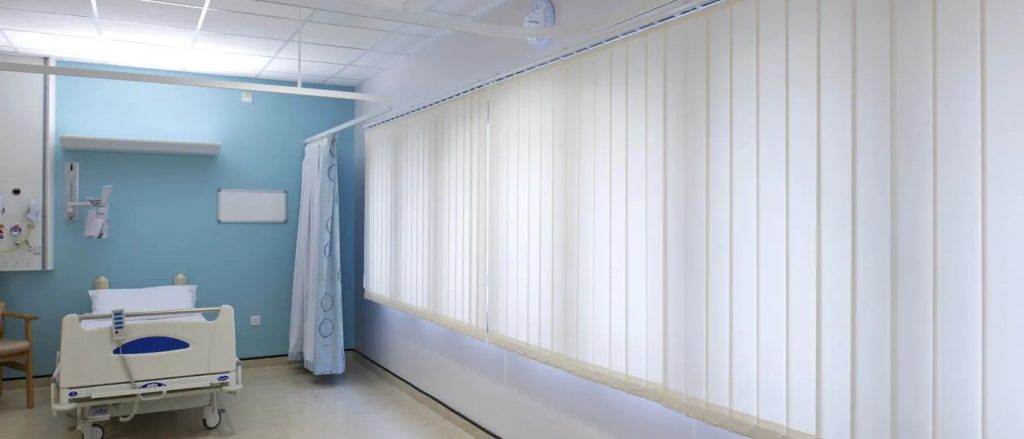
London Office Window Treatments
Nestled in the heart of London’s bustling business district, a modern office complex sought to redefine its interior space.
Designed by award-winning architects, the goal was to achieve a balance between contemporary elegance and practical functionality.
Window treatments played a crucial role in tying together the textures, tones and fixtures that defined this sleek workplace.
The Solution
We provided a range of high-quality blinds, each chosen to complement the space’s aesthetic and practical requirements:
- Venetian Blinds: Sleek and versatile, these blinds featured fabrics with metallic or textured finishes that reflected the office’s contemporary tone. Their adjustable slats allowed for precise light control, maintaining a balance of natural light and privacy.
- Pleated Blinds: With their soft, textured appearance, pleated blinds introduced an element of subtle sophistication. The choice of neutral-toned fabrics added depth to the design without overwhelming the clean lines of the space.
- Roller Blinds: Minimalistic and easy to use, roller blinds were made with performance fabrics designed to filter light and reduce glare. Their understated design complemented the office’s streamlined aesthetic while enhancing thermal comfort.
The Results
- Modern Elegance: The carefully chosen fabrics contributed to a cohesive and stylish interior that reflected the architectural vision.
- Enhanced Comfort: Fabrics designed for glare reduction and light filtration created a more comfortable work environment, improving focus and productivity.
- Functional Design: The blinds balanced form and function, meeting both the aesthetic and practical needs of a busy office.
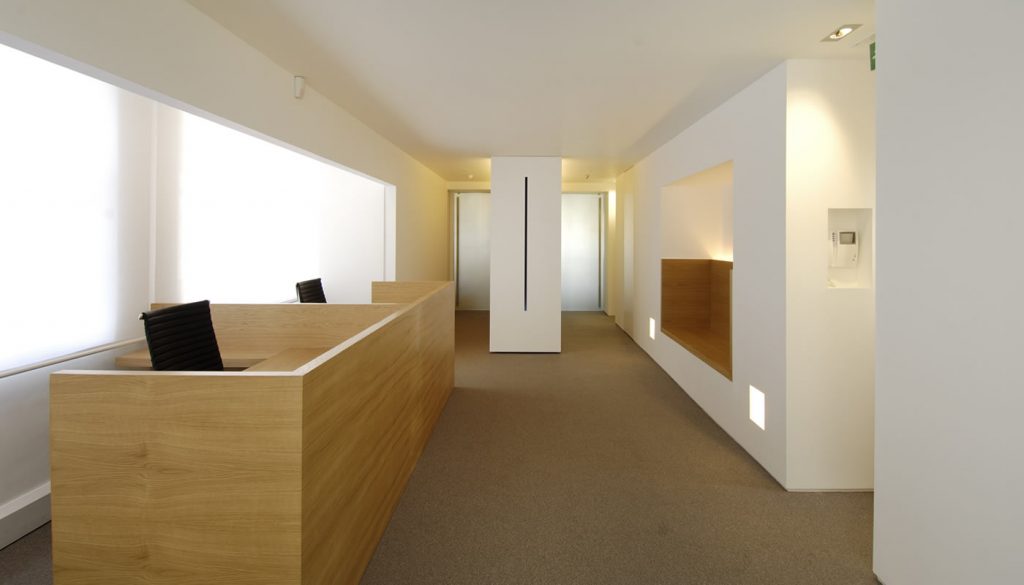
East Barnet School
With a history dating back to 1937, East Barnet School has consistently been recognised for its excellence, earning two ‘outstanding’ ratings from OFSTED.
In 2011, the school unveiled a state-of-the-art building designed in collaboration with staff and students, reflecting its commitment to nurturing talent and aspiration.
The Solution
We provided a tailored approach to meet the school’s specific needs:
- Roller Blinds for Classrooms, Labs and Studios: Adjustable roller blinds were installed to offer precise light control. The fabrics selected reduced glare and maintained a comfortable temperature, aiding focus and concentration during lessons.
- Blackout Blinds for Specialised Areas: In rooms used for visual presentations, experiments, or other specialised activities, blackout blinds ensured complete light exclusion, creating the optimal setting for these tasks.
The Results
- Enhanced Learning Conditions: Roller blinds helped reduce distractions by controlling glare and brightness, fostering an environment where students could focus and excel.
- Practical Functionality: Blackout blinds provided the flexibility required for specific activities, supporting the school’s diverse curriculum.
- Architectural Integration: The blinds complemented the school’s modern design, maintaining a cohesive look throughout the facility.
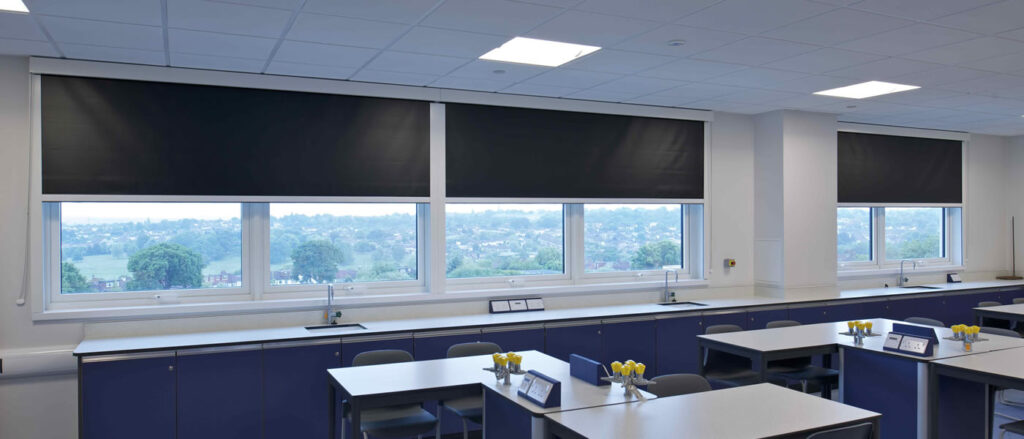
These projects demonstrate that high-performance fabrics are a practical choice for spaces aiming to reduce costs and environmental impact.
By tailoring solutions to each project’s unique challenges, the right blind fabric can make a world of difference.
Conclusion: Make the Right Choice with Expert Guidance
Whether you’re managing solar heat gain in a commercial building, ensuring privacy in urban homes, or enhancing sustainability in schools and hospitals, the fabric you choose makes all the difference.
High-performance fabrics can transform spaces by improving thermal comfort, reducing glare, and meeting energy efficiency goals.
Our expertise ensures that you get more than a product—you get a solution.
From fabric selection to custom installation, we’re here to help you make the right choice every time.
FAQ: Your Questions About Blind Fabrics Answered
How do I choose the best blind fabric for my project?
Start by identifying the key requirements of your space—such as light control, thermal performance and privacy. Consider factors like fabric colour, weave and openness factor. Consulting with a professional team like Enviroscreen can help ensure you make the right decision.
Are there sustainable blind fabric options available?
Yes, many fabrics are now designed with sustainability in mind. Options include materials made from recycled fibres or eco-friendly processes. Enviroscreen offers a range of sustainable fabrics to help meet your environmental goals.
Can blinds help reduce energy costs?
Absolutely. Blinds with the right fabric can reduce solar heat gain, improve insulation and lower reliance on HVAC systems. Choosing high-performance shading solutions can significantly cut energy expenses.
What types of blinds are best for large windows?
For large windows, consider roller blinds, vertical blinds, or shading systems with motorised options. These systems offer excellent coverage, control, and seamless integration with your design.
How can I ensure my blinds remain durable over time?
Choose high-quality fabrics designed for longevity and ease of maintenance. Regular cleaning and proper care will also extend the life of your blinds.
Does Enviroscreen provide custom solutions?
Yes! We specialise in bespoke solutions tailored to your specific needs. From fabric choice to installation, we work closely with you to deliver the perfect result.
For enquiries about blind fabric solutions:
Enviroscreen Systems
Swift House,
13 Ronsons Way,
St Albans,
AL4 9QT
United Kingdom
Telephone: 01727 220 007
E-mail: info@enviroscreen.org.uk

